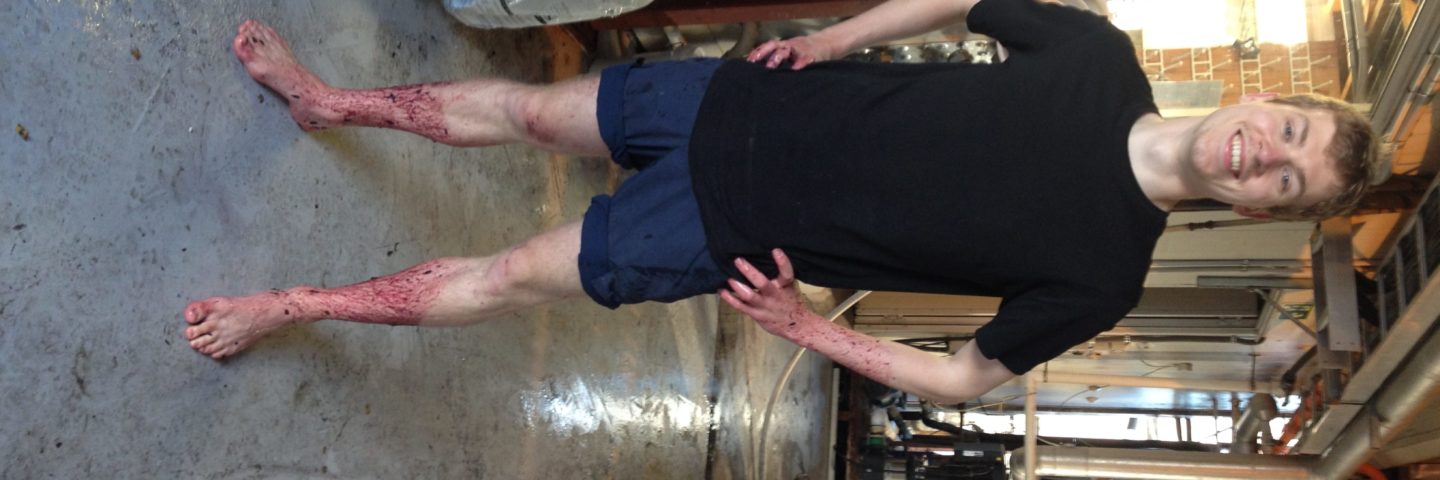Fresh out of university, I made the decision to go travelling. With a keen interest in wine production, and New Zealand top of the list, it was no surprise I ended up in Marlborough. As well as visiting the area’s fantastic collection of wineries and sampling many of their products, I decided to go further with a step inside the cellar doors to learn how to make the wine itself. I have no formal training in winemaking, am prone to clumsiness and this is my first ever harvest. It was always going to be an interesting couple of months!
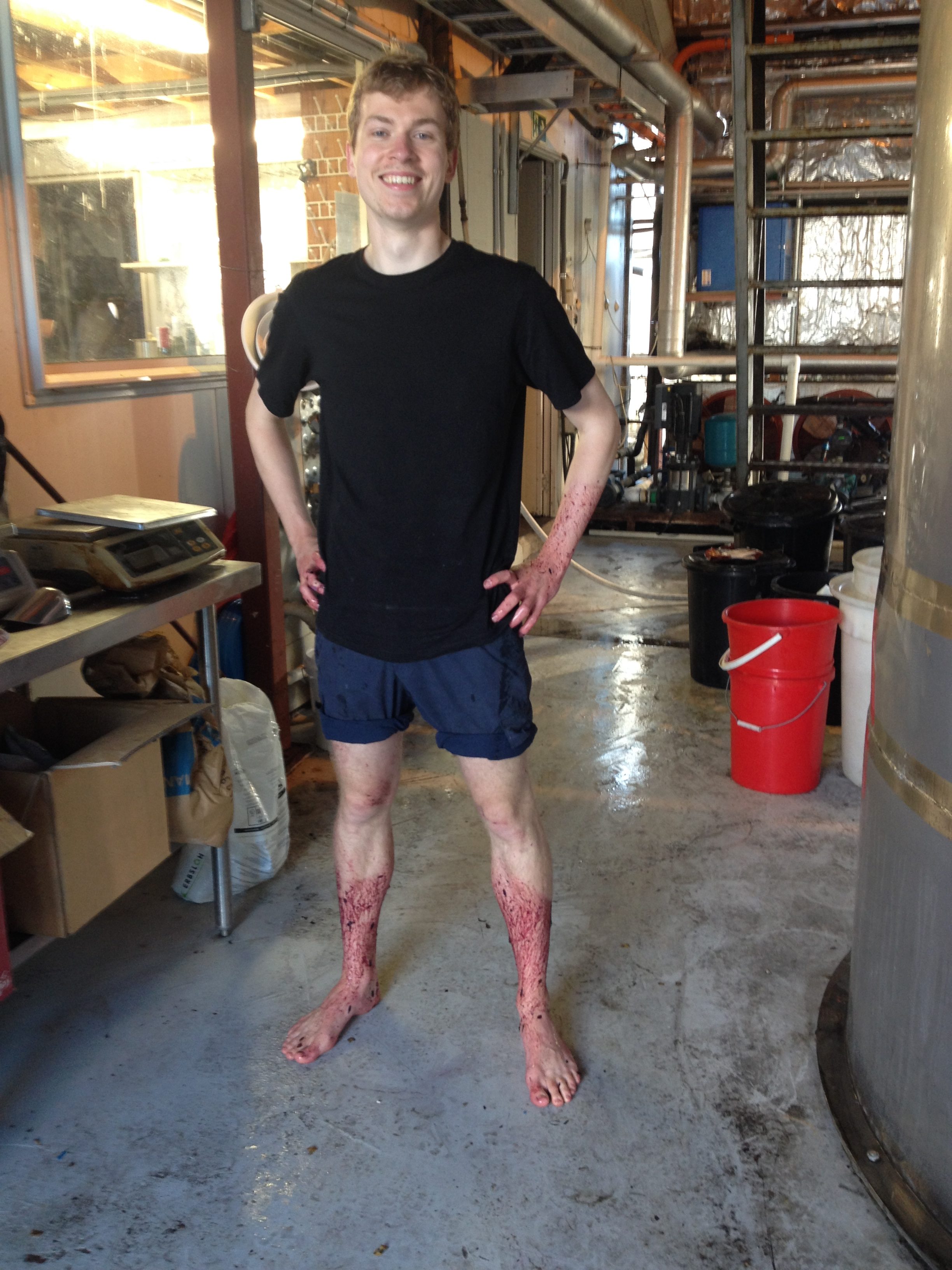
Setting the scene
When one puts New Zealand and wine together, Marlborough often comes to mind. And for good reason: this small region tucked into the north east corner of the South Island accounts for 77% of New Zealand’s wine production, its wines some of the most sought-after in the world.
The flag bearer of the region is Sauvignon Blanc, with its distinctive tropical flavour profile and intense aromatic qualities. Though it’s hard to ignore other styles coming out of Marlborough – think Kevin Judd’s superb ‘Wild’ Sauvignon Blanc from Greywacke. Plus, there are a whole host of grape varieties being grown in the area, from Pinot Noir to Riesling and even Tempranillo.
Marlborough’s geography is both spectacular and extremely favourable to the production of wine. Mountain ranges in the south and west give way to wide alluvial plains at the mouth of the Wairau River (the Awatere further south), extending along the coast and rising into narrow valleys with northerly aspects. Further inland, vineyards extend along the river valley and the Waihopai tributary.
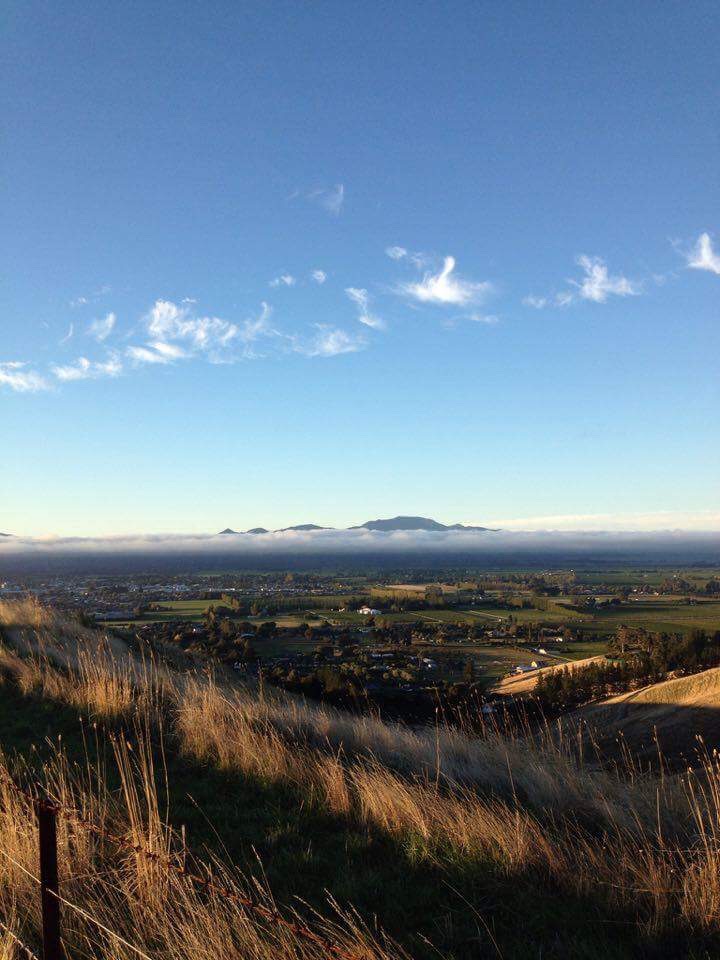
This makes Marlborough comparatively sheltered to other wine-producing regions, the mountains creating a barrier from the rain-bearing oceanic winds. Sitting in this rain shadow, Marlborough’s vineyards boast some of the most sunshine hours in New Zealand. This is reflected in the Maori name for the Wairau valley: the ‘Kei puta te Wairau’, ‘the place with the hole in the cloud’.
A relatively cool climate, with high amounts of sunshine and low rainfall totals, combined with free-draining fertile soils provide ample opportunity to produce high quality wines from a multitude of varieties and styles.
The harvest typically occurs in the months of March and April. In these two months people from all over the world flock to the town of Blenheim near the mouth of the Wairau River. It plays host to an exciting and cosmopolitan mix of budding and veteran winemakers – including complete novices like me.
Farming is an important mainstay for the local economy and not only does the town boast extensive wine production, but also a rich variety of locally sourced produce. However, I am on a backpacker’s budget, so often have to stick to the tinned stuff, sadly!
I am spending harvest at one of WineTrust’s favourites, Lawson’s Dry Hills, which lies right on the edge of Blenheim towards the coast. With the striking golden Wither Hills – or ‘Dry Hills’ in the background, it is a fantastic setting. Smaller than other wineries in the area, it has a real sense of community whilst producing some of the most revered wine in Marlborough.
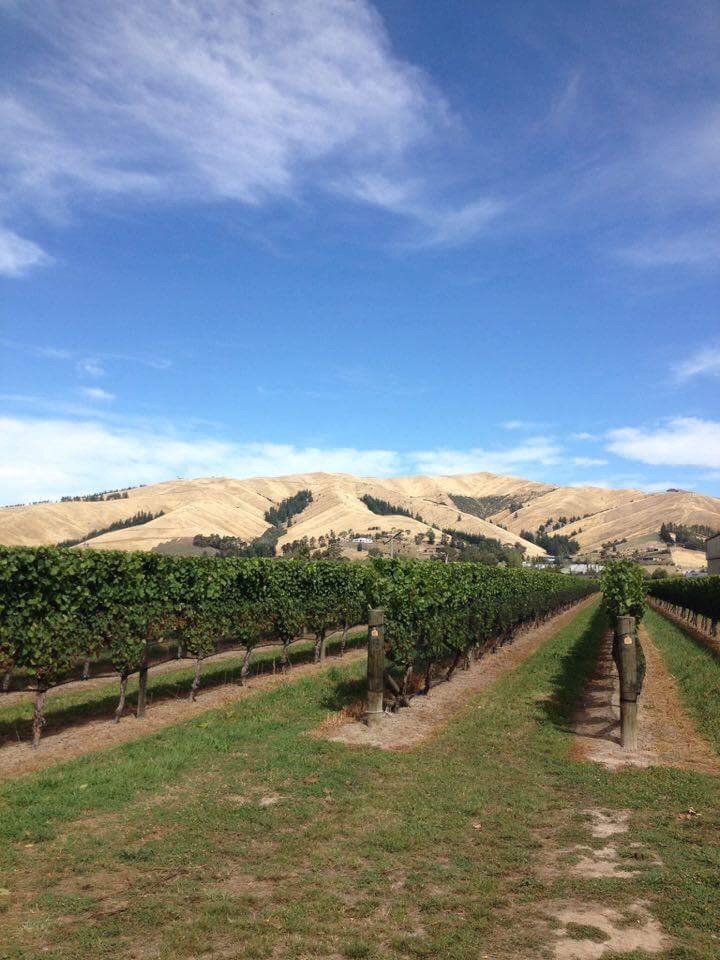
Launched in 1992, Lawson’s had built its foundations 12 years earlier when husband and wife Ross and Barbara Lawson began growing grapes on their Alabama Road property. This was already no ordinary enterprise, with vineyards situated on low lying, flood prone land, planting what was back then a barely known variety – Gewürztraminer. Their first vintage, of just 15 tonnes, was managed by Ross from an old red tin shed on the property!
Pioneers both on and off the vineyard, Ross became the first chairperson of the newly formed New Zealand Screwcap Initiative. This enterprise is more interesting than it might sound; it was instrumental in introducing the screwcap as an alternative to variable and taint-prone corks. The 30-strong coalition of 30 wineries successfully introduced screwcaps and in 2002, Lawson’s were the first winery to utilise this new bottling method.
Since, Lawson’s holdings have expanded, encompassing vineyards in and around Blenheim and over in the Awatere valley. Such a range of microclimates and terroirs lends the very best selection of grapes to create wines of the desired quality and style.
Marcus Wright has been at the helm of winemaking since 2001; having worked in the Americas and France, he actually found his passion for wine as a research scientist. He is joined by assistant winemaker, Rebecca Wiffen, who has plentiful Old and New World experience. Mark Ludemann is the estate’s viticulturist with experience in the region, having managed Seresin’s Organic Raupo Creek Estate prior to joining Lawson’s in 2006.
Lawson’s work passionately to promote their own wines, but also the wider New Zealand wine industry. Founded in 2005, The Family of Twelve is an exclusive alliance of twelve prestigious and top quality producers, of which Lawson’s are members. An export-focused marketing alliance, they serve as flagbearers for quality New Zealand products and are key advocates for the country’s winemakers.
An impressive enterprise, Lawson’s achievements are also reflected in their fantastic medal haul over the past few years, including many Gold medals and Trophies at the International Wine Challenge and Decanter World Wine Awards. Lawson’s is very much dedicated to sustainable vineyard practices, and was recognised by the International Wine Challenge’s Trophy for sustainability in 2013.
An update on this year’s harvest
So, as April fast approaches so does the height of this year’s harvest. Some late summer warmth and dry spells, timed nicely with my arrival at the beginning of March, has helped offset some rather wet weather at times. Whilst the first batches of grapes are coming in, the main crops are due to be picked next month. Luckily for me, this has given me plenty of time to get used to the day to day operations.
Whilst learning the ropes of the winery, one of the main jobs is to collect grape samples from the vineyards, crush them to extract the juice then test this for Brix (sugar) levels, pH and total acidity. This is used to determine the ripeness of the fruit and help the winemakers and viticulturist decide when certain parcels should be picked. Most varieties and parcels are ripening in sync – this will certainly make the next few weeks interesting.
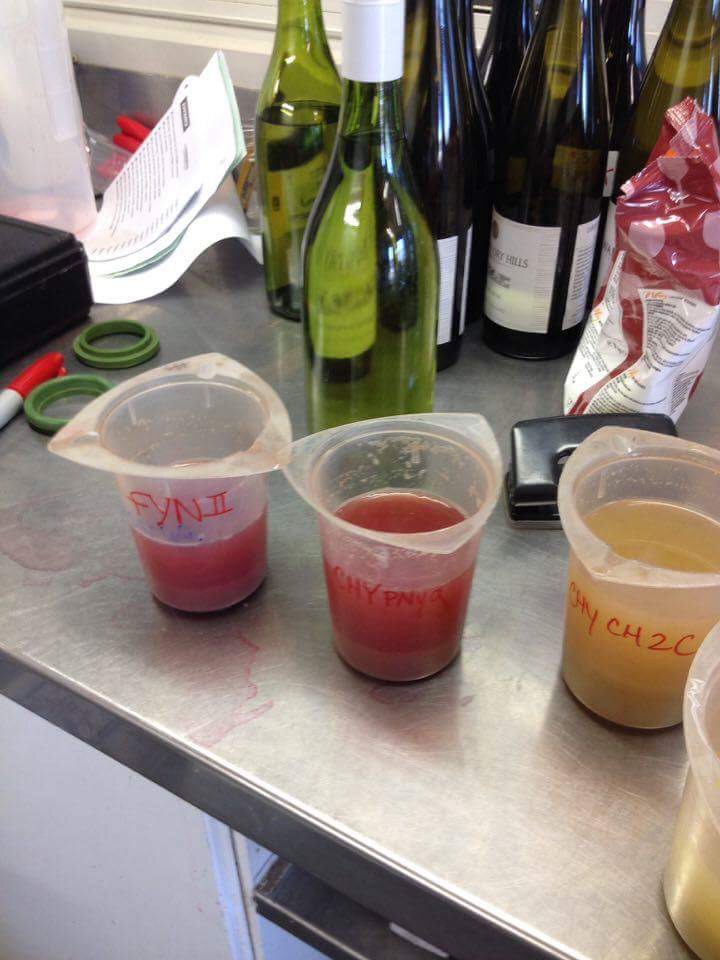
As for our first batches of grapes, they are destemmed and pressed before being transferred into stainless steel tanks. This is carried out by the small team of cellar hands as well as the winemakers. Once the juice has settled we then rack the wine into a separate tank, to extract as much juice as possible and remove unwanted sediment, or lees (although sometimes this is a good thing!)
We also help kickstart the fermentation process with inoculation, the addition of yeast to the grape juice in tank. The temperature of the tank is controlled to ensure cool fermentation, which preserves the wine’s desired qualities, including those characteristic intense aromas.
As an interesting and experimental side project, we hand-picked a small batch of Gewürztraminer from the original plantings, putting destemmed grapes into small barrels to undergo spontaneous fermentation on the skins. Such is the weird and wonderful world of winemaking. We will see the outcome of this six months from now.
Otherwise, I’ve been busy in the rather unromantic side of wine, cleaning barrels, tidying the winery and spending many hours on the bottling line. But with so much to get stuck into and learn about, there is hardly a dull moment. It makes you appreciate all the hard work and behind-the-scenes operations that go into a glass of wine – making it all the more rewarding after a long day.
Winemaking is one of the most demanding but rewarding things I’ve done. I cannot wait to see the results of the 2017 vintage. Cheers!
Richard Adams
